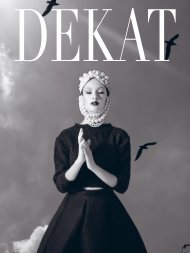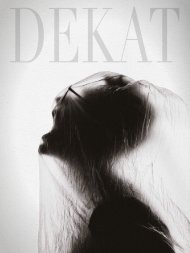1
Create successful ePaper yourself
Turn your PDF publications into a flip-book with our unique Google optimized e-Paper software.
INTRODUCTION<br />
Melvyn Minnaar<br />
The enigma of the Owl House in the outback of Nieu-Bethesda, the story of Helen Martins, was a slow spread among a group of us involved in the theatre and art world around<br />
1980. With my feet in theatre as well as visual art, that mysterious presence somewhere in the Klein-Karoo was a lure and a challenge. Together with my friend Moyra Fine,<br />
benefactor of The Space Theatre, we took the long road trip. I remember the compelling awe of the landscape and the remarkable oasis of the village, so far from everything.<br />
Athol Fugard, whose plays ploughed the human condition wowed audiences at The Space, had been mesmerised. He had acquired a house. Word spread and we went to look.<br />
We got the key and permission from Mevrou Claassen. The cottage in the unadorned, practical style of the region, stood singly across from the dry crags of the Gat River. For us,<br />
theatre people, the interior of the Owl House was a dramatic set of pure mystery and dark enchantment. For us, seeped in the visual arts environment, the Camel Yard and its<br />
inhabitants were a sculpture experience like no other.<br />
Some had been talking about ‘outsider art’ as an adjunct to the normative of white space galleries. It was also a time when South Africa was 'discovering' or 'uncovering' art<br />
mostly ignored by the cultural regime of the time.<br />
Unabashed invention, singular, alone and powerful, is what this strange small woman left here. And thanks to its desolation, its isolation, it had remained intact since her death<br />
some four years earlier. But it certainly was in need of care. Back in the big cities, that message took hold among a variety of people in the art community. The concept of “Friends<br />
of the Owl House” slowly came into being – friends of a creative outsider’s universe.<br />
Among us were individuals like Anne Emslie and Sue Ross, who both published books about Martins, well-known architect Maciek Miszewski and Raymund van Niekerk, director<br />
of the SA National Art Gallery. Art gallery and museum people signed up. Through contacts we brought PPC, the cement company, on board as sponsor. I believe their officials’<br />
expertise was tickled by the challenge of fixing cement structures invented and handmade by a frail, small women and her inspired handymen. PPC played a vital part in the<br />
formation of the Friends and its future.<br />
Perhaps the Friends’ most important achievement was to relocate Koos Malgas to the town when restoration started. He was Martins’ right-hand man until her death. She called<br />
him “Artist”. He had left a few years earlier to work in Worcester, but we built him a house (designed by Miszewski). His work until his death in 2000 was invaluable especially in the<br />
preservation of the Camel Yard. By then he was indeed a celebrated “artist”, recorded as such in a book by his granddaughter Julia Malgas.<br />
An interesting aspect of our involvement was finalised when a legal conundrum of ownership was resolved. A distant nephew could claim inheritance, but records were in a<br />
shambles and the local council was in a quandary about tax and ownership. So it was agreed that the council would take ownership of the property and the Foundation would<br />
manage it. For a sum of R75, “Erf 306 Nieu-Bethesda (991 vierkante meter)” was transferred to the municipality on February 13, 1984.<br />
Based on the international concept of supporters of an art institution formalising group assistance as 'Friends', we slowly developed the guidelines of our 'duty': to support and<br />
protect the Owl House. Membership was enthused by invention and inspiration. Our prime task was to restore and to preserve, while promoting the Owl House’s heritage and<br />
stature, as well as Helen Martins’ importance as ‘outsider artist’.<br />
In 1996 the Friends had formalised the Owl House Foundation. Proper curatorial and administrative endeavours were established in town as tourism grew. Interaction with the local<br />
community also became vibrant and vital. The Foundation facilitated various projects and set-up a curatorial-management system. More than anything, the Friends promoted the<br />
unique vision and execution of Helen Martins’ art.<br />
I think it is important to note that most of the Friends were outsider enthusiasts and experts, their distance from Nieu-Bethesda allowing a sober look at this unique project and<br />
how to cherish it for the future and, also to the advance of the budding tourism industry of the town. Various projects were tackled: inspections, research, documentation, expert<br />
advice sought, fundraising planned and applications for heritage status drawn up.<br />
In the following years, as electricity finally arrived in the 1990s, tourism grew as more and more pilgrimages were undertaken by the charmed and the curious. Village people became<br />
more integrated into what was once for them the strange world that Miss Helen had created. They learnt, told about, and boasted of her legacy. The dynamics of both society and<br />
the function of the Friends, formal and informal, transformed. – all FOR THE LOVE OF LIGHT THE OWL HOUSE: A Visual Journey.<br />
VI<br />
FOR THE LOVE OF LIGHT<br />
FOR THE LOVE OF LIGHT<br />
VII





